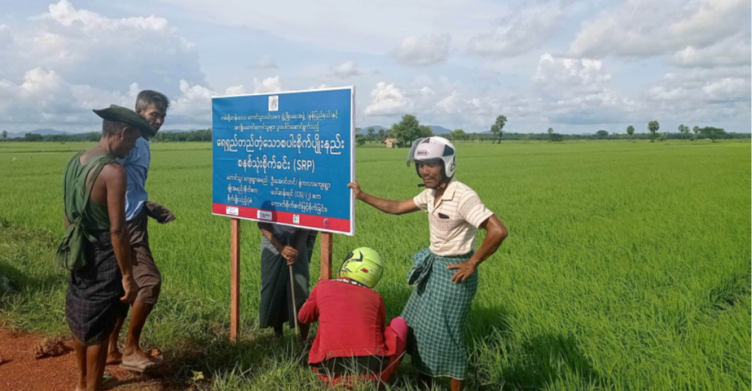
The Gulf of Mottama Project has supported a seed bank system in the project villages to improve crop yields and product quality and increase family income. 25 seed banks in 25 project villages from Chaungzon, Paung, Thaton, Bilin and Kyaikto Townships, in Mon State and 17 seed banks in 17 project villages in Waw, Thanatpin and Kawa Townships in Bago Region have been set up since 2017.
The seed bank committee store high-quality paddy seed and green-pea seed in the seed banks to distribute during monsoon and winter cultivation. This year, the seed bank committee provided around 53 tons of seeds to 573 farmers in the form of loans. To improve sustainable rice production, about 107 model-farm from 22 villages were provided 40 Kg of paddy certified seed (CS) per acre to Gulf of Mottama Project Villages through the Coastal Farmer Development Associations - CFDA.
These include a set of input supplies such as different types of fertilizer for 285 acres in these villages. Additionally, The Gulf of Mottama Project organizes farmers education forums in collaboration with CFDA to transfer farming techniques. Furthermore, CFDA also assists local farmers to access market linkages with traders and brokers to have reliable prices for their products.
The GoMP provides backstopping and technical monitoring to make sure that CFDA applies the farming technologies to achieve high yields and sustainable rice production systems to combat climate change. This monsoon crop season, CFDAs are trying to produce high-quality seeds from Registered seeds to certified seeds (RS to CS) and aim to distribute them to local farmers during the following cropping season. Fertilizers and planting costs are provided by the project to enable farmers to produce these seeds.
Previously, farmers did not have a seed bank system and the building to store seeds in the villages. Traditionally farmers use their best grain to grow for the following year. But now seed bank systems have been installed and farmers have access to quality seed.
There were no seed growers in the villages in the past, but now nearly every project villages have two seed growers per-village to produce high-quality seeds which is to be distributed the following year during monsoon season.
Because of the establishment of the seed bank system and the creation of farmer education forums, it has ultimately changed the practice of local farmers on their farming methods and increased crop yields through access to high-quality seed.